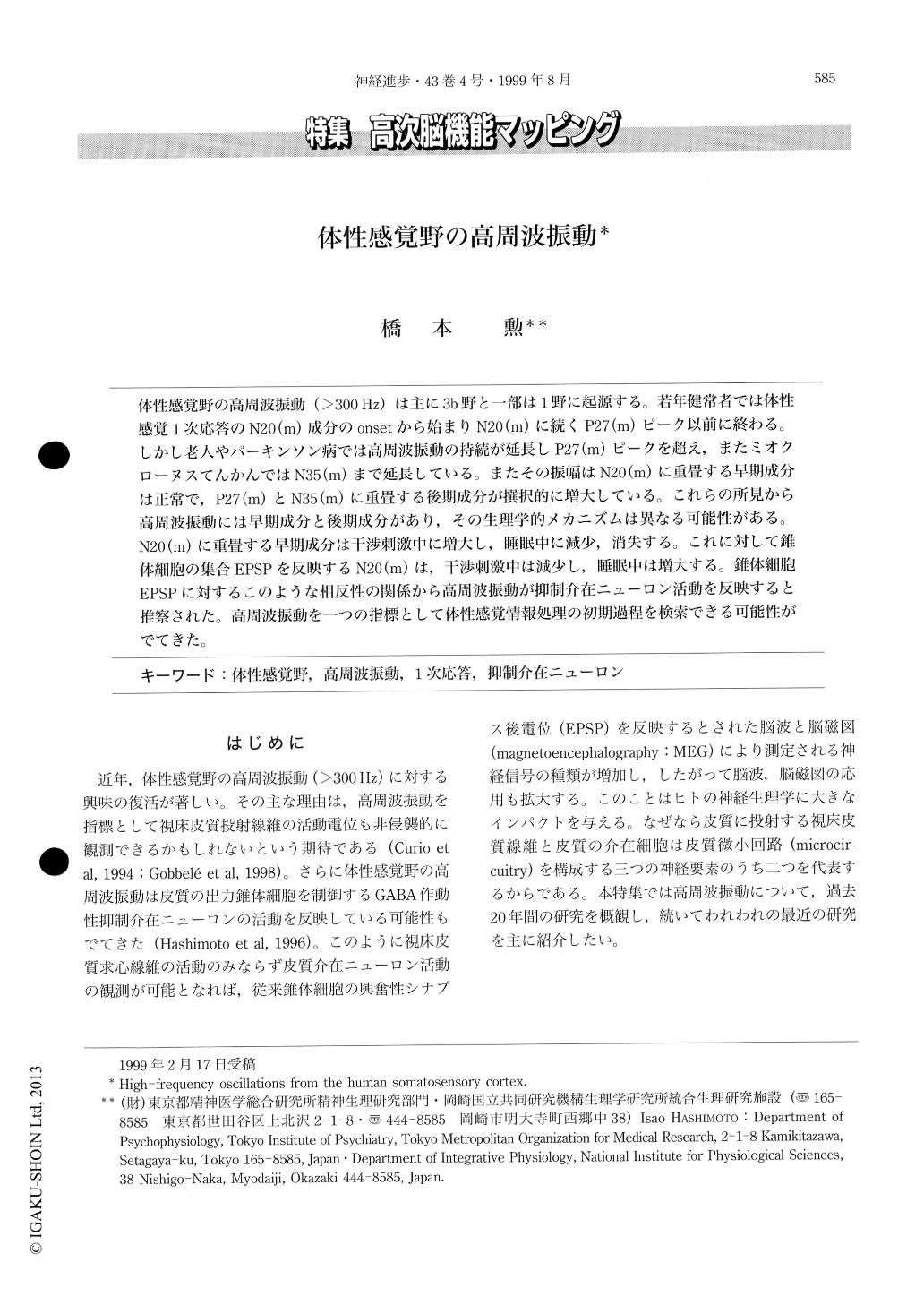Japanese
English
- 有料閲覧
- Abstract 文献概要
- 1ページ目 Look Inside
体性感覚野の高周波振動(>300Hz)は主に3b野と一部は1野に起源する。若年健常者では体性感覚1次応答のN20(m)成分のonsetから始まりN20(m)に続くP27(m)ピーク以前に終わる。しかし老人やパーキンソン病では高周波振動の持続が延長しP27(m)ピークを超え,またミオクローヌスてんかんではN35(m)まで延長している。またその振幅はN20(m)に重畳する早期成分は正常で,P27(m)とN35(m)に重畳する後期成分が撰択的に増大している。これらの所見から高周波振動には早期成分と後期成分があり,その生理学的メカニズムは異なる可能性がある。N20(m)に重畳する早期成分は干渉刺激中に増大し,睡眠中に減少,消失する。これに対して錐体細胞の集合EPSPを反映するN20(m)は,干渉刺激中は減少し,睡眠中は増大する。錐体細胞EPSPに対するこのような相反性の関係から高周波振動が抑制介在ニューロン活動を反映すると推察された。高周波振動を一つの指標として体性感覚情報処理の初期過程を検索できる可能性がでてきた。
There has been a remarkable resurgence of interest in high-frequency oscillations( >300 Hz) from the human somatosensory cortex in recent years. This is mainly because of a high level of expectation to record noninvasively not only excitatory postsynaptic potentials (EPSPs) of the pyramidal neurons in the somatosensory cortex but also action potentials of the thalamocortical projection fibers. Moreover, it is also possible that the somatic evoked high-frequency oscillations represent activity of GABAergic inhibitory interneurons controlling the output of pyramidal cells in the cortex.

Copyright © 1999, Igaku-Shoin Ltd. All rights reserved.


